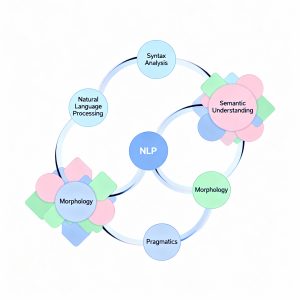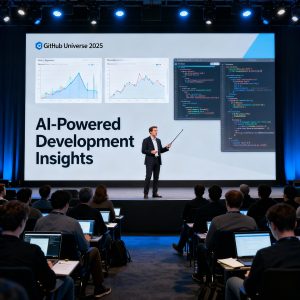As software systems scale and evolve, their complexity often outpaces the ability of any single engineer to fully comprehend them. Organizations grow, responsibilities fragment, and domain knowledge becomes increasingly specialized. In this environment, understanding how deployed software behaves in the real world—especially when the unexpected occurs—becomes a formidable challenge. The key to meeting this challenge is observability, a discipline that enables teams to make sense of unpredictable production environments and, crucially, to connect system behavior to actual user experience.
The Expanding Need for Observability
Modern software organizations, whether in healthcare, logistics, or consumer services, inevitably divide responsibilities among specialized teams. Once software is live, unforeseen issues—ranging from performance bottlenecks to subtle business risks—emerge. Teams must rely on data and telemetry to understand and address these “unknown unknowns,” as intuition and continuous oversight are no longer sufficient.
Observability has emerged as the solution, but its definition is often shaped by vendors and tool providers. At its core, observability is about investigating and interpreting the behavior of live systems to answer questions that cannot be anticipated in advance.
What Are We Trying to Understand?
The heart of observability is making sense of live software systems. But what exactly are teams trying to understand?
- Site Reliability Engineers (SREs) want to see how recent changes affect reliability and uptime.
- Domain Engineers focus on diagnosing issues within their specific services or modules.
- Product Managers and Analysts look for insights into the business impact of new features or experiments.
Each role brings a unique perspective, but all depend on production data to learn, adapt, and improve.
The Missing Perspective: The User
While observability is often discussed in terms of technical metrics and engineering goals, it is essential to remember that software ultimately exists to serve users. Too often, the user’s experience is treated as a secondary concern, inferred through proxies like funnel analytics, crash reports, or backend service metrics.
However, these proxies rarely capture the full reality of user interaction. The true measure of a system’s success is not just technical uptime or error rates, but whether users are able to achieve their goals smoothly and efficiently. Without direct insight into user experience, observability remains incomplete.
Bringing the User into Observability
To achieve user-focused observability, organizations must expand their view beyond internal system health and performance. This means connecting telemetry from every layer—backend, frontend, and everything in between—to the real people interacting with the application.
Frontend applications, as the primary interface between technology and users, are especially critical. Observability should reflect not just what the system is doing, but how those actions impact individuals. Without this focus, teams risk missing the most important outcome: user satisfaction.
A Supply Chain Analogy
Consider the journey of a simple product, like paper towels. From raw materials to manufacturing, packaging, shipping, and finally purchase, every step is tracked and optimized for efficiency and reliability. Businesses use meticulous records to identify and resolve issues at any stage, ensuring the product reaches the consumer as intended.
Similarly, software delivery is a supply chain. Each stage—from code deployment to frontend rendering—must be monitored, with special attention paid to the final “handoff” to the user. If a user cannot log in to a healthcare portal due to a backend failure or outdated modules, the technical cause is secondary to the user’s frustration and inability to accomplish their task.
The Interface as the Critical Touchpoint
Unlike physical goods, where the transaction ends at purchase, software continues to deliver value as long as users remain engaged. Every interaction, from logging in to viewing test results, depends on a seamless interface. If any part of the system fails, the impact is immediate and personal for the user.
Engineering teams must recognize that their responsibility does not end with code deployment or API delivery. True observability tracks the entire journey, ensuring that user intentions are fulfilled and obstacles are quickly identified and resolved.
Observability’s Overlooked Purpose
While technical observability has advanced, its purpose can sometimes be lost amid the flood of metrics and dashboards. The ultimate goal is not just to understand “what happened,” but to uncover “why it matters”—especially from the user’s perspective.
Product analytics may reveal broad trends, but only user-focused observability can pinpoint where and why users encounter friction. For the end user, the details of a technical failure are irrelevant; what matters is whether the software works for them in the moment they need it.
Building a User-Focused Observability Practice
To create a truly user-centric observability strategy, organizations should:
- Integrate Telemetry Across All Layers: Collect and correlate data from backend services, frontend interfaces, and user devices.
- Prioritize Real User Outcomes: Measure success by user satisfaction and goal completion, not just technical uptime.
- Enable Cross-Functional Collaboration: Ensure that engineers, product managers, and analysts all have access to actionable insights tied directly to user experience.
- Continuously Refine Metrics: Evolve observability practices to reflect changing user needs and business objectives.
Conclusion
User-focused observability is the next evolution in understanding and improving complex software systems. By connecting technical telemetry to real user experiences, organizations can ensure that their software not only runs reliably, but also delivers meaningful value to the people who depend on it. In a world where software complexity is ever-increasing, making sense of the user’s journey is the only way to achieve true operational excellence.
Read more such articles from our Newsletter here.



